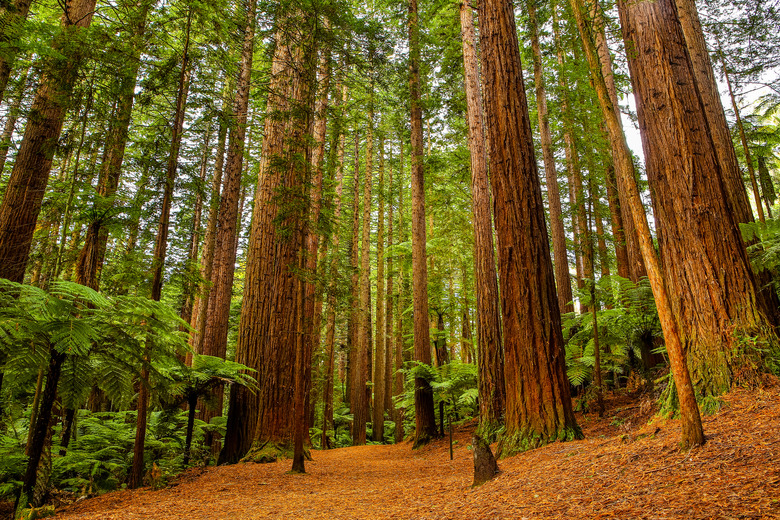Redwood Vs. Pine
We may receive a commission on purchases made from links.
Redwood (Sequoia spp.) vs. pine (Pinus spp.) is one of those debates, like coffee vs. tea, that comes down largely to personal preference. Consumers in the market for playground equipment or decking often choose redwood or pine for the building material. Both woods have unique advantages and disadvantages, depending on the consumer's environment and application.
Pine is generally chosen over redwood as redwood is more expensive, mainly because it is only found in areas along the California coastline. However, there are circumstances that make redwood the more attractive option regardless of the cost.
Advantages of Redwood Trees
Advantages of Redwood Trees
Properly maintained redwood has a beautiful cinnamon color that gives it a rich, elegant look. If you're looking to add a beautiful new tree to your yard, redwood probably isn't the best option; these trees can stretch to more than 50 feet tall, need a ton of water and reliably flourish only in California and parts of Oregon. But redwood lumber is ideal for use in patios and other outdoor spaces.
Redwoods are coastal trees, so the wood is somewhat naturally resistant to moisture, humidity and insects. Therefore, redwood is not injected with toxic chemicals like pressure-treated pine is. Consumers who live in California are purchasing native timber when they select redwood. Therefore, they are supporting the local economy and choosing building materials best suited for their environment.
Advantages of Pine Trees
Advantages of Pine Trees
If you're looking to add a new tree to your yard, pine is almost certainly a better fit than redwood. There are more than 100 pine species grown around the world, and the majority are well suited for growing in North America. No matter your climate, there's probably a pine cultivar that will do beautifully outside your home.
Pressure-treated pine lumber is substantially less expensive than redwood. While sealing every two years is recommended, pine will not turn an unattractive blackish-gray color like redwood can over time if not sealed. It is stronger than redwood even though both are classified as soft woods. Pine can be used for stairs and structural members, unlike redwood, and pressure-treated pine structures can resist rot for decades. Pine forests regenerate much quicker than redwood forests, so pine is a more sustainable natural resource.
Disadvantages of Redwood Wood
Disadvantages of Redwood Wood
Sustainability is an issue due to limited growth sites and slow regeneration. Redwood trees can take more than 80 years to mature. Redwood structures also often need additional steel support brackets, because redwood can't be used alone for structurally significant members or heavy traffic areas like stairs as it is too soft. Also, redwood loses its attractive cinnamon color and turns blackish-gray if a waterproof sealant is not applied on an annual basis. It also becomes susceptible to rot within five years.
Disadvantages of Pine Wood
Disadvantages of Pine Wood
Pine does not have the attractive cinnamon color that redwood does, and pressure-treated pine does not take stain easily. Also, there are some safety concerns, as pressure-treated pine contains chemicals — including arsenic — to preserve the wood and inhibit mold, fungus and termites. Finally, the wood can be fickle; inexperienced contractors who do not nail or screw into it correctly can cause the pressure-treated pine to split, chip and warp.
